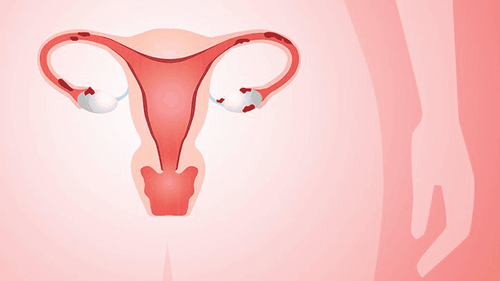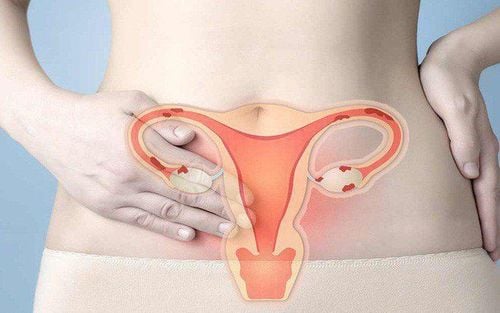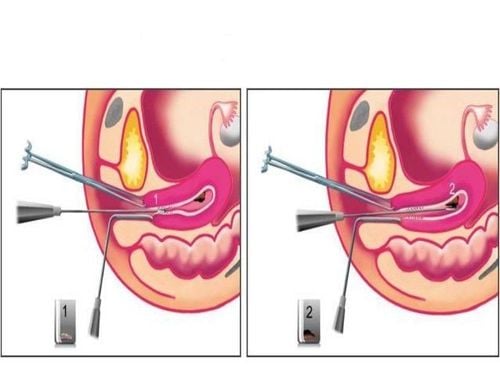This is an automatically translated article.
Endometrial biopsy is one of the commonly used methods in the diagnosis of uterine problems in women; It helps doctors detect diseases in the endometrium, and it also allows doctors to check whether the body's hormone levels that affect the endometrium are balanced or not.1. What is an endometrial biopsy?
An endometrial biopsy is a test in which a doctor uses a needle to remove a small sample of the lining of the uterus. The samples are then analyzed under a microscope to look for abnormal cells.In addition to being effective in diagnosing diseases in the endometrium, this procedure also helps doctors check whether the body's hormone levels affecting the endometrium are balanced or not. .
2. How to perform endometrial biopsy
There are now many ways to perform an endometrial biopsy, including:Using a soft, straw-shaped device to suck a small sample of cells out of a woman's uterus. Although this method takes less time and can be done easily and quickly, it can lead to cramping for some patients. Using an electronic suction device: This can make the patient feel uncomfortable while performing. Liquid spray also known as jet irrigation method: Helps wash the tissues located in the uterus to the outside. Before performing tissue washing, the doctor will remove the pre-lining with a specialized brush.
3. Why should endometrial biopsy be performed?
Endometrial biopsy is a highly accurate and effective method, making it easier for doctors to determine the cause of conditions such as abnormal vaginal bleeding or excessive mucosal hyperplasia. uterus. In particular, this procedure is often used to check whether a patient has endometrial cancer.For women who have difficulty getting pregnant, performing an endometrial biopsy helps determine if the lining of the uterus is suitable for pregnancy.
Currently, endometrial biopsy can be done along with hysteroscopy. This method allows the doctor to examine the inside of the uterus through a small tube in the lining of the uterus.

Đối với những phụ nữ khó có khả năng mang thai, thực hiện sinh thiết nội mạc tử cung giúp xác định xem liệu các lớp niêm mạc tử cung có phù hợp để mang thai hay không
4. When should an endometrial biopsy be performed?
You may be offered an endometrial biopsy if a previous Pap test shows you have precancerous cells in your uterus. Your doctor may also recommend this test if you have any of the following symptoms:Irregular periods, heavy and prolonged bleeding, or no menstrual periods Post-vaginal bleeding during menopause Bleeding during hormone therapy Bleeding after taking a breast cancer drug called tamoxifen When an ultrasound detects a thickened uterine lining Endometrial biopsy cannot fix or prevent any of the symptoms listed above. However, it can help the doctor determine the cause of these symptoms and then prescribe the appropriate treatment for the patient.
5. Notes before performing endometrial biopsy
Women who are pregnant should absolutely not have endometrial biopsy. In addition, some other conditions are not recommended for this test, including:Have blood clotting disease Acute pelvic inflammatory disease Cervical cancer Acute infection of the vagina or neck Uterus Severe stenosis/cervical stricture Endometrial biopsy is also not indicated during or after menopause, unless the patient has problems with abnormal vaginal bleeding.
6. Endometrial biopsy procedure

Trước khi thực hiện sinh thiết nội mạc tử cung, bạn nên cung cấp cho bác sĩ các thông tin về những loại thuốc mà bạn đã hoặc đang sử dụng gần đây
Your doctor may also ask you to take a test to check if you are pregnant. Note that, for two days before the biopsy, you must not use any creams or other medications in the vagina.
6.2 During Operation Tissue samples are removed from the uterus and sent to a laboratory for examination by a pathologist.
The patient will have to remove the layer below the waist area and wrap a cloth around the waist, then lie on his back on the examination table, legs are elevated and placed on the stirrups to keep the legs. The doctor will use a lubricated speculum to insert into the patient's vagina, then slowly and gently open the vaginal wall wide so that the inside of the vagina and cervix can be seen. The cervix will be cleaned and locally numbed with an injection or spray.
Next, the doctor will insert a very thin and flexible biopsy instrument into the cervix and go inside the uterus to collect the sample. Most women experience some discomfort during an endometrial biopsy. An endometrial biopsy usually takes place within 5-15 minutes.
6.3 After the procedure After an endometrial biopsy, you may feel pain in your vagina for about 1-2 days. Symptoms usually seen after biopsy such as vaginal bleeding, discharge within 1 week. When bleeding occurs, you should use tampons and avoid strenuous physical exercises or heavy lifting for 1 day after the biopsy. Also, don't have sex or douche until the bleeding stops.
6.4 Endometrial Biopsy Results You should get your results about 1 week after the test is done.
Normal results : No abnormal or cancerous cells were found. Those who are menstruating, the uterine lining must be suitable for the menstrual phase at the time of sampling.
Abnormal results: Detects the following abnormal conditions:
Polyps or fibroids (small or large growths in the uterus) Uterine infection, endometritis Endometrial hyperplasia. Cancer or early signs of endometrial cancer. Having thyroid problems Endometrial biopsy is not an absolute safety measure, it still carries certain risks for the patient when performed, such as vaginal bleeding or vaginal infection. Therefore, you should choose a reputable medical facility with high expertise to perform the biopsy.
To perform endometrial biopsy at Vinmec International General Hospital, you can contact Hotlines of hospitals, or register online HERE.
MORE:
Purpose of endometrial biopsy Symptoms, how to diagnose endometriosis When does endometriosis occur?













